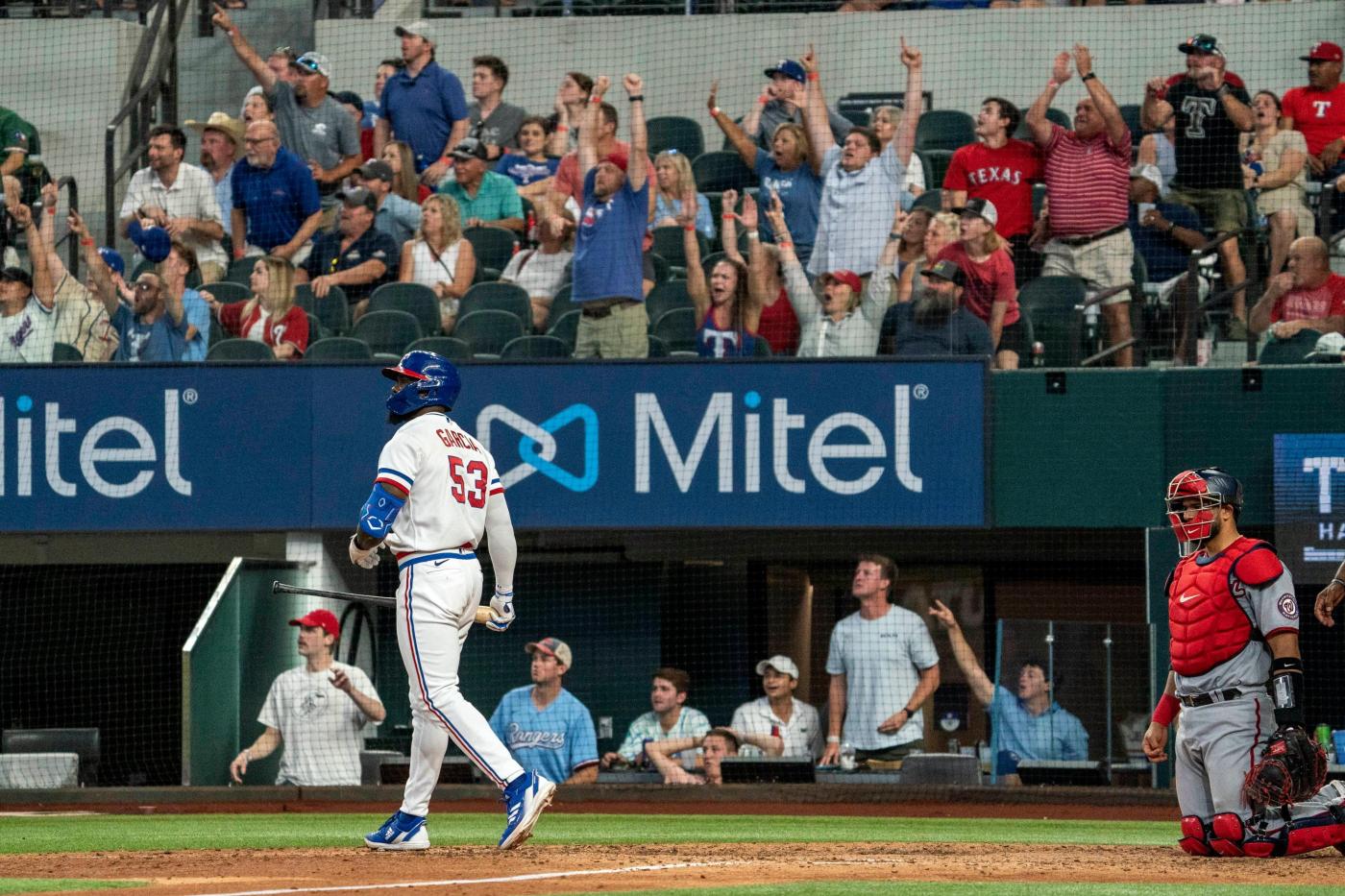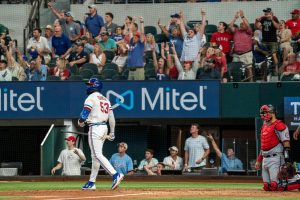
Column: MLB tweaks its pace-of-game rules — but why stop there? More ideas to save the game, a few seconds at a time.
Major League Baseball announced some tweaks to its rules Thursday to move the game along and eliminate the dead moments that allegedly cause younger fans to tune out.
The boomers who run the game are doing whatever’s necessary to pacify Gen Z and save the game, knocking off seconds of wasted time for the good of all mankind.
The pitch clock remains at 15 seconds, but with runners on base it will be reduced from 20 seconds to 18, a two-second time-saver that surely the kids will think is “fire.”
Relievers will get only two minutes to get their butts from the bullpen to the pitcher’s mound, shaving 15 seconds off the previous time allowance. That should be enough time for the kids to check out a TikTok video while fidgeting in their seats waiting for the game to continue.
According to The Athletic, MLB believes it can take another five minutes off the average game time, which was 2 hours, 40 minutes in 2023, the shortest average since 1985 and about 24 minutes shorter than in 2022.
This, of course, was the Year of the Pitch Clock, the first season in history we no longer could refer to baseball as the game without a clock. The rule changes were an instant hit with fans, though MLB revealed Thursday that the average nine-inning game increased by more than seven minutes from April (2 hours, 36 minutes) to September (2:44). Tweaking the rules was the only solution.
I’m all for moving the game along, and the many rule changes in 2023 led to more runs and stolen bases and higher attendance. But it should be noted that the 2023 World Series was the lowest-rated in history, in spite of the change-of-pace rules that resulted in the fastest games (a 3:01 average) since 1996.
So the changes didn’t solve every problem.
Among the other rule changes announced for 2024 are the reduction of mound visits from five per game to four and allowing catchers to call for a mound visit without actually going out to the mound, basically using it as a timeout.
The MLB press release said mound visits “rank among fans’ least favorite events in baseball,” though it did not provide a list to show how they compare with prolonged replay reviews or hitters standing on first base after hitting a fly ball off the outfield wall.
MLB also figured out a way to respond to clever pitchers who learned to game the system after foul balls by walking around the mound with the new ball to delay the start of the pitch clock by a few seconds. A pitcher no longer will be required to be standing on the mound. The clock will start as soon as the umpire gives him the ball and the fielders are back at their positions. No more “stall ball.”
Perhaps the most welcome rule change says pitchers who warm up before an inning now have to face at least one batter before being removed. How many times have we seen a manager let his pitcher warm up to start an inning and then remove him after the opposing manager has announced a pinch hitter? This wastes all of our time — and often forces fans at home to watch more TV commercials.
According to MLB, it happened 24 times last year, including twice in the World Series.
OK, it seemed like a lot more. Never mind. MLB projects that one simple move will shave three minutes off a game. But since it happened only 24 times, I’m not sure of the point of the tweak, other than it’s annoying to watch.
There are many other ways of shaving precious seconds off games and saving the national pastime for Generation Z and its predecessors, including these three proposals:
1. Bullpen cars delivering relievers to the mound.
A quick trip on a modified golf cart, instead of making the relievers jog in, could shave at least five seconds off every pitching change. And, of course, those pitching changes can mount up in this day and age. (A giant team cap serving as the roof of the bullpen car would be preferable, naturally, but not mandatory.) Bullpen cars were once a staple for teams in the 1970s. Pitcher Mike Flanagan once said: “I could never play in New York. The first time I ever came into a game there, I got in the bullpen car and they told me to lock the doors.”
2. Reduce batter timeouts to one per game.
Currently batters are allowed one timeout per plate appearance, and though I have no stats, I’m guessing most of them are called with two strikes. But if they knew they’d have only one for the entire game, they might save it for a late-inning at-bat when it matters more rather than risk wasting one in the early innings. According to its release, MLB withdrew a proposal requiring the plate umpire to immediately reset the clock after a timeout, based on “player feedback.” Umpires still will decide how much time a batter gets to reset, and it’s usually only a few seconds.
3. A home run clock for running the bases.
Why not? I’m not anti-posing, but what once was a slow jog out of the batter’s box on a home run trot has evolved into a “stand at the plate without moving an inch” approach by some sluggers. Texas Rangers slugger Adolis García was the poster child for the stand-and-watch crowd during the 2023 postseason. It was exciting but time-wasting. A slow jog should be the least amount of effort a hitter gives. A new rule could give hitters 25 seconds to round the bases on a home run out of the park, or else an automatic strike would be called on the next hitter.
By my estimate, MLB could reduce its games to an average of 2 hours, 15 minutes with these small tweaks alone. And if baseball could figure out how to get quicker replay reviews, perhaps it would be down to 2 hours by 2030. That might be long enough to keep up with the dwindling attention spans of younger fans.
So get busy, baseball.
Time’s a-wasting.
()

